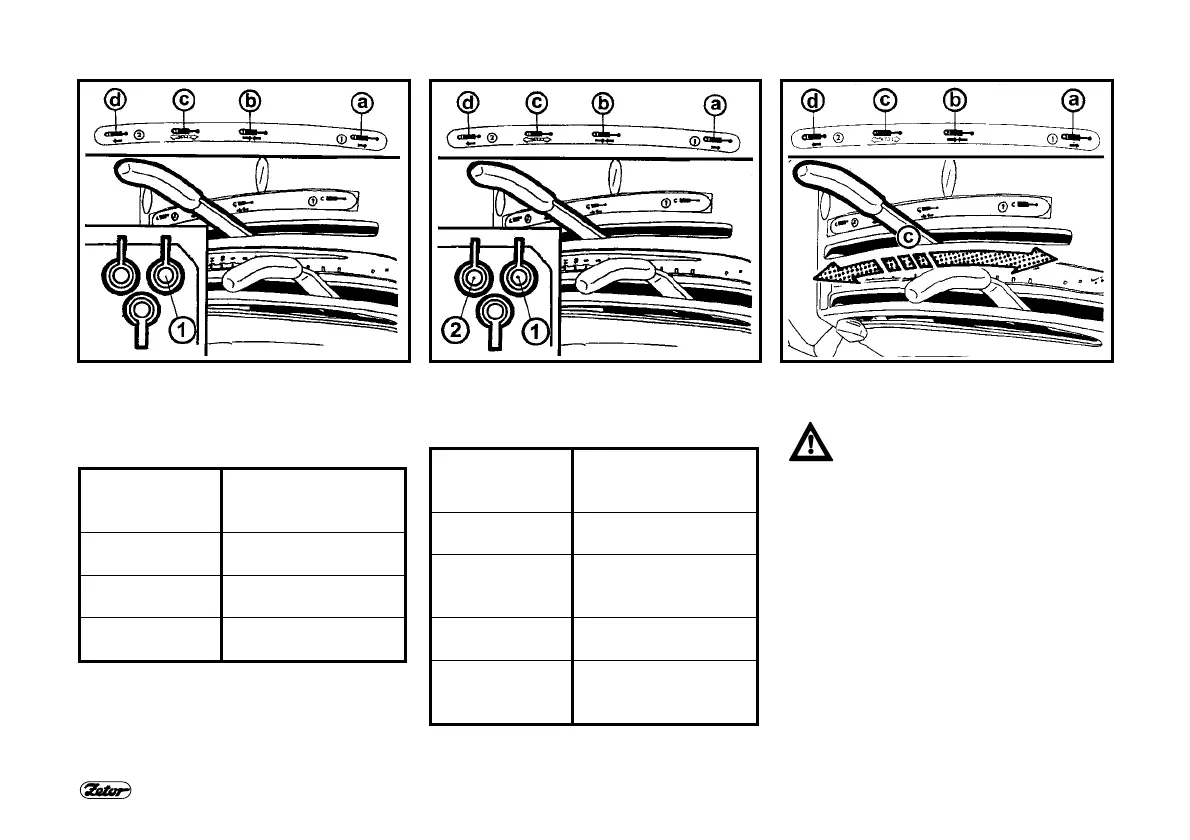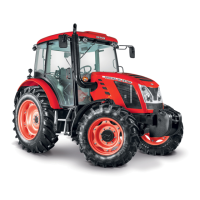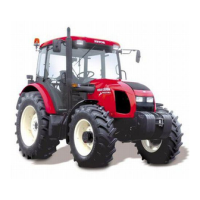89
HYDRAULIC EQUIPMENT
E414 E415 E416
SINGLE-ACTING CYLINDER
CONTROL
Control is always connected to the quick-
coupling “1”.
Lifting
Lever in position “a”
(pressure in quick-
coupling “1“)
End of lifting
Lever is moved to
position “b“ (neutral)
Lowering
Lever is moved to
position “c“ (floating)
End of lowering
Lever is moved to
position “b“ (neutral)
DOUBLE-ACTING CYLINDER
CONTROL
Connection to quick-couplings “1“ & “2“.
Movement in
one direction
Lever in position “a“
(pressure in quick-
coupling “1“)
End of move-
ment
Lever in position “b“
(neutral)
Movement in
reverse direc-
tion
Lever in position “d“
(pressure in quick-
coupling “2“)
End of move-
ment
Lever in position “b“
(neutral)
Relieved posi-
tion
Lever in position "c"
low pressure in
quick-coupling “2”)
When working with a double-
acting cylinder it is necessary to
move the control lever of the
external circuit throught the
position „c“ (floating position) as
quicky as possible, because both
sides of the working cylinder are
connected to the drain and an
uncontrolled movement of the
piston rod may occur.

